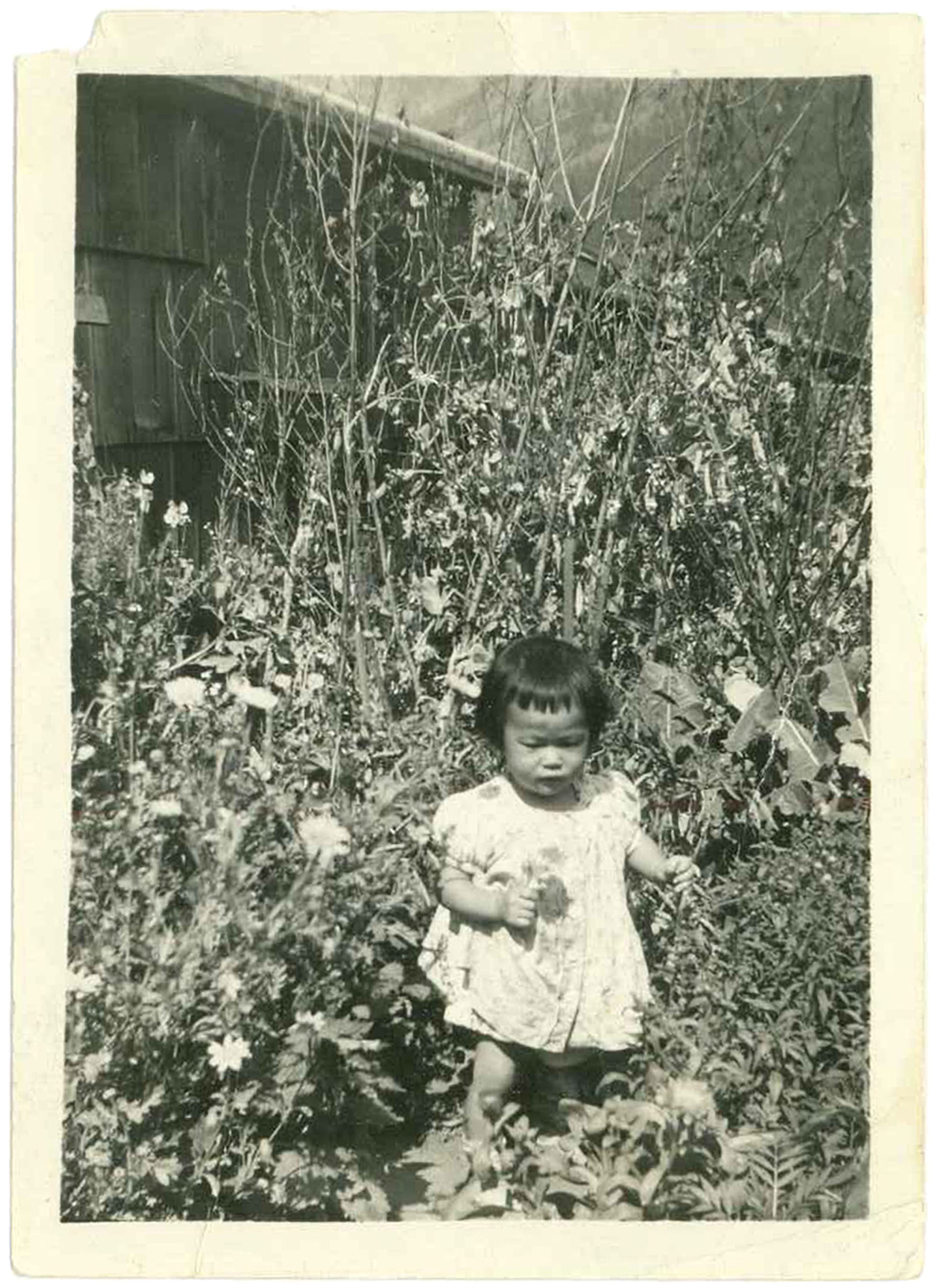
Do you remember when this photograph was taken?
“I think I was about one, or so. My brother Jack took it, I think. Him or one of his friends.”
Do you remember anything of Tashme?
–in conversation with Sharon Makoto Matsui Hunchuck (b. Tashme, 1944– )
The summer sun is bright and high in the sky over this young Canadian girl as she explores the vegetative world of western Canada. Her left arm reaches out, tentatively, to balance as she navigates between stalks of the towering, gigantic flora. Clutched tightly in her right hand, her treasures of the day—a small handful of flowers gathered from the undergrowth.
At the time this photograph was taken, sometime in the summer of 1945, this girl’s experience of the world was limited to the confines of the Tashme Internment Camp, near present-day Hope in the province of British Columbia. Located in the Cascade Mountains—just outside of the 160 kilometer quarantine zone that ran along the coast of Canada from which all Japanese Canadians were removed—the self-contained camp housed Canadian citizens of Japanese descent in around 350 shacks.
One of eight Japanese Canadian internment camps, the population of Tashme peaked at 2644 in January of 1943. It declined steadily as people were transferred to other camps or deported back to Japan. Tashme closed in September 1946, and the Matsui family—who like all Japanese Canadians were given the choice to move east of the Rocky Mountains or to be “repatriated” back to Japan—chose to stay in Canada, moving east to Toronto.
Sharon Makoto Matsui Hunchuck never returned to British Columbia. She currently lives in Toronto.
Elise Misao Hunchuck
Elise Hunchuck is a Berlin-based researcher and designer trained in landscape architecture, philosophy, and geography whose work focuses on bringing together fieldwork and design in a collaborative practice. Facilitating exchanges between representational methods as a way to develop landscape-oriented research methodologies, her research develops cartographic, photographic, and text-based practices to explore the agency of disasters and infrastructures of risk. Elise is also a member of the editorial board of Scapegoat Journal. elisehunchuck.com | scapegoatjournal.org | @elisehunchuck